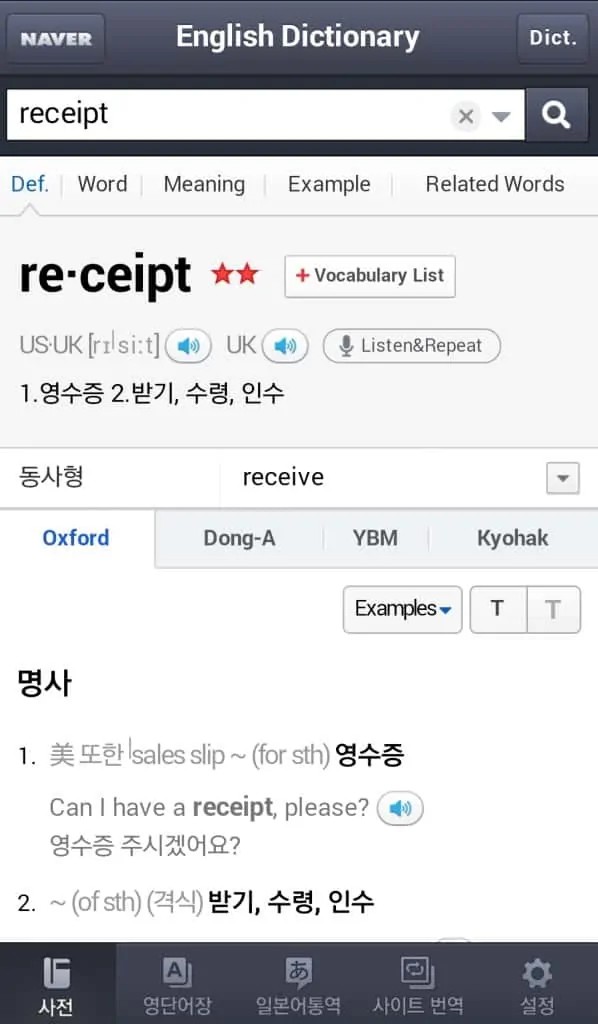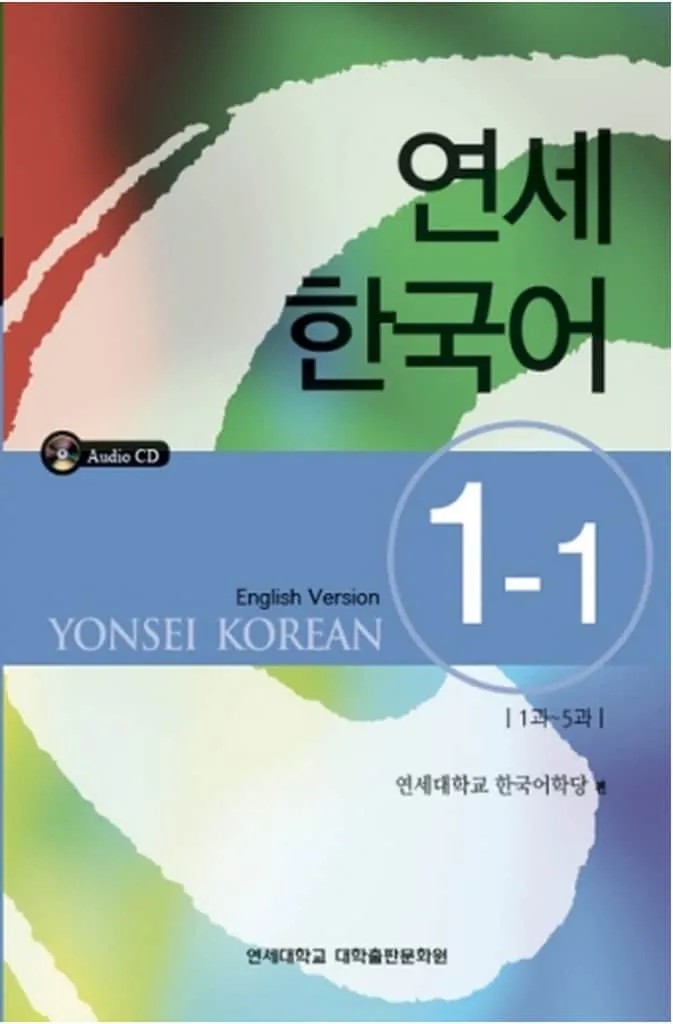Are you fascinated by K-dramas, K-pop, or the vibrant culture of Korea and eager to learn the Korean language? Perhaps you’ve been wondering about the Best Way To Learn Korean Language and if it’s truly possible to achieve fluency efficiently. The answer is a resounding yes! Learning Korean, while it may seem daunting at first, is absolutely achievable, and you can make significant progress faster than you might think.
However, the speed and effectiveness of your Korean language journey depend on several factors. These include your individual learning style, the consistency of your study schedule, and, most importantly, the learning methods you choose. Just like any skill, learning Korean requires the right approach and tools to maximize your efforts.
Fortunately, there are proven strategies and techniques that can significantly accelerate your Korean learning process. From leveraging the surprising number of English loanwords in Korean (Konglish) to employing memory-enhancing stories and understanding Korean word families, there are enjoyable and effective ways to boost your language acquisition.
In this comprehensive guide, we’ll explore the best ways to learn Korean language, diving deep into actionable strategies and practical tips. We’ll move beyond the traditional classroom setting and discover how you can take control of your learning and unlock Korean fluency faster and more effectively.
Key Strategies for Learning Korean Effectively
To give you a quick overview, here are some core strategies we’ll be discussing to help you on your journey to learn Korean efficiently:
- Master Hangul First: Building a solid foundation by learning the Korean alphabet, Hangul, is absolutely crucial for reading, writing, and pronunciation.
- Exploit Konglish: Expand your Korean vocabulary quickly by recognizing and utilizing “Konglish” words – Korean words borrowed from English.
- Immerse Yourself Daily: Integrate Korean into your daily routine through various mediums like language exchange apps, Korean media, and real conversations to enhance fluency and comprehension naturally.
- Structured Learning Plan: Follow a well-organized study plan and utilize effective resources such as online platforms, grammar checkers, and flashcards for a systematic learning experience.
Want to keep these tips handy? Download our free guide to learning Korean fast and refer to it anytime!
Free “Learn Korean Fast” Guide
Finding Your Best Path to Korean Fluency
When we talk about learning Korean, many traditional methods come to mind. Perhaps you envision years of formal classroom study or even the idea of immersing yourself in Korea to truly grasp the language. While these approaches certainly have their merits, they aren’t the only routes to fluency, and often, they are not the most efficient or practical for everyone.
The truth is, achieving proficiency in Korean doesn’t necessitate exorbitant tuition fees, drastic lifestyle changes, or exceptional talent. The individuals who successfully learn Korean often aren’t inherently different from anyone else. Their success lies in adopting specific learning habits and utilizing effective strategies. By understanding and implementing these approaches, you too can discover the best way to learn Korean language for your own needs and goals.
[
Self-Study Success: Learning Korean Independently
In today’s digital age, learning Korean by yourself has become incredibly accessible and effective. The abundance of Korean resources available online, from free apps and websites to structured paid courses, empowers you to take charge of your learning journey.
You can create your own personalized curriculum, starting with the fundamentals and progressing at your own pace. The essential first step is mastering Hangul, the Korean alphabet. Once you have a grasp of Hangul, the subsequent stages of learning become significantly smoother and more enjoyable.
To guide you on your self-study path and help you learn Korean efficiently, we’ve compiled a set of invaluable tips. These strategies are particularly beneficial for those aiming to learn Korean quickly, but they are equally effective for anyone dedicated to independent learning.
Accelerate Your Learning: How to Learn Korean Fast
To learn Korean quickly and effectively, you need the right tools, a structured study plan, and, crucially, a positive and motivated mindset. It might sound like a lot, but optimizing your study habits to maximize every minute is simpler than you think!
By implementing the following tips, you can significantly speed up your Korean learning journey and start speaking Korean sooner than you imagined. Let’s explore these effective strategies to unlock the best way to learn Korean language for rapid progress.
1. Prioritize Hangul: Mastering the Korean Alphabet
One of the most fundamental tips for effective Korean learning is to master the Korean alphabet, known as Hangul (or Hangeul). Learning Hangul is not just about deciphering characters; it’s about building a strong foundation for your entire Korean language journey.
Hangul is a remarkably logical and phonetic alphabet, far more precise and efficient than relying solely on Romanized Korean. Investing time in learning Hangul upfront will significantly accelerate your Korean learning in the long run.
In fact, Hangul is considered a relatively easy alphabet to learn. With the right learning materials, many learners can grasp the basics of Hangul in just a few hours, or even within an hour.
The key to efficiently learning Hangul lies in using teaching materials that effectively connect Hangul characters with the English alphabet and sounds you already know. Avoid rote memorization, which can be tedious and less effective.
Instead, focus on finding mnemonic devices and associations that link Korean characters to familiar English sounds and letters. This approach makes character recognition much easier and helps you quickly associate each character with its corresponding sound. There are resources specifically designed to teach Hangul using these effective methods.
It’s crucial to avoid the temptation of learning Korean solely through romanization (writing Korean words using English letters). While romanization might seem like a shortcut initially, it creates significant limitations in the long run. For example:
Hangul: 커피
Romanized Korean: keopi
While “keopi” might give you a rough idea of the pronunciation, it lacks the precision and clarity of Hangul. The long-term benefits of learning Hangul are immense, and the initial investment of time is minimal compared to the advantages it provides throughout your Korean learning journey. It truly is the best way to learn Korean language from the start.
2. Leverage Konglish: Your Bridge to Korean Vocabulary
There’s a fascinating connection between Korean and English, a linguistic “marriage” that can be incredibly beneficial for language learners. Over time, Korean has adopted and adapted numerous English words, creating a unique blend known as “Konglish.”
Think of Konglish as a helpful shortcut to expanding your Korean vocabulary. These words are essentially English words that have been incorporated into the Korean language, often with slight phonetic adjustments to fit Korean pronunciation.
Korean + English = Konglish
Konglish is a real and significant part of the Korean language. These words offer an accessible entry point into Korean vocabulary because you already have a foundational understanding of their meaning. You can find comprehensive lists of Konglish words readily available online to boost your vocabulary quickly.
Generally, Konglish words are Korean words that sound similar to or are derived directly from English words. Here are some common examples:
| English | 한국어 (Korean) |
|---|---|
| Menu | 메뉴 (me-nyu) |
| Fork | 포크 (po-keu) |
| Chocolate | 초콜릿 (cho-kol-leet) |
| Ice cream | 아이스크림 (a-ee-seu-keu-rim) |
| Pizza | 피자 (pi-ja) |













Studying Konglish provides an easy and enjoyable way to learn Korean vocabulary because you’re already familiar with the base English words. Furthermore, the Korean pronunciation of Konglish words can sometimes be slightly different from English, making it a fun and engaging way to expand your linguistic awareness. Recognizing and utilizing Konglish is definitely part of the best way to learn Korean language, especially for beginners.
Free “Learn Korean Fast” Guide
3. Utilize Stories and Associations: Make Vocabulary Memorable
Stories are powerful tools for learning and memory. Engaging narratives are passed down through generations because they are captivating and easily remembered. This principle applies directly to language learning as well.
Creating associations between new Korean words and concepts you already understand in your native language, particularly through stories and mnemonic devices, is a highly effective way to memorize vocabulary. Associations and stories significantly enhance Korean word retention.
Let’s illustrate this with an example. Consider the Korean word “이쑤시개 (issusigae),” which means “toothpick.” To remember this word, we can create a memorable story:
“I love sushi. Every time I eat it, I get sushi (“쑤시 | ssusi”) stuck in my two (“이 | i”) front teeth (“이 | i”). I need a tool (“개 | gae”) to remove it. I’ll use a toothpick.”
In this story, we associate the sounds within “issusigae” with familiar English words or concepts. “쑤시 (ssusi)” sounds like “sushi,” and “이 (i)” can represent “two” or “teeth.”
Developing your own associations and stories is a fantastic and fun best way to learn Korean language vocabulary. This technique is particularly helpful because many Korean words don’t have obvious cognates or similarities to English words.
For instance, the Korean word for “desk” is “책상” (chaeksang). There’s no immediate sound or meaning connection between “desk” and “책상 (chaeksang).” This is where a story comes to the rescue.
Imagine a diligent student named Sang (상). Sang is known for his hard work and consistently earns top grades. To ensure his homework is perfect, he meticulously “checks” (책 | chaek) it. Therefore:
Sang checks his homework at his “책상” (chaeksang).
Whether you use pre-made associations or create your own, the key is to find stories and connections that resonate with you personally and make vocabulary learning more engaging and memorable.
You can also enhance your memory by incorporating visuals with your stories. For example, to remember the word 비누 (binu), meaning “soap,” you could associate it with the feeling of being refreshed and “be new” after showering with soap. Hence:
비누 (binu) makes me “be new”
Continuously look for ways to simplify Korean vocabulary acquisition through interesting stories and associations. If existing ones don’t quite click, don’t hesitate to invent your own – personalized mnemonics are often the most effective!
“I like the short lessons, they are do-able after a full working day. I like the format of the lesson, introduction, repeat, exercises, find mnemonics is a good idea. I like the optionals, like typing in Korean.” – Marion van Engelen, Jeju, South Korea 🇰🇷
4. Harness Korean Word Families: Unlock Vocabulary Patterns
Korean, like many languages, exhibits patterns in word formation. Recognizing and utilizing these patterns, or “word families,” can significantly accelerate your vocabulary acquisition and help you understand the relationships between words.
For example, words for languages in Korean often share a common suffix. Notice how world languages all end with the same “어 (eo)” syllable in Korean:
| English | 한국어 (Korean) |
|---|---|
| Korean language | 한국어 (hangugeo) |
| Japanese language | 일본어 (ilboneo) |
| Chinese language | 중국어 (junggugeo) |
| German language | 독일어 (dogireo) |
| French language | 프랑스어 (peurangseueo) |
| Spanish | 스페인어(seupeineo) |
| Italian language | 이탈리아어 (italliaeo) |
Similarly, nationalities or people from specific countries often share a common ending. People from the countries listed above all end with the same “인 (in)” syllable:
| English | 한국어 (Korean) |
|---|---|
| A Korean person | 한국인 (hangugin) |
| A Japanese person | 일본인 (ilbonin) |
| A Chinese person | 중국인 (junggugin) |
| A German person | 독일인 (dogirin) |
| A Spanish person | 스페인인 (seupeinin) |
| A French person | 프랑스인 (peurangseuin) |
| An Italian person | 이탈리아인 (italliain) |
The core part of these words represents the countries’ names in Korean:
| English | 한국어 (Korean) |
|---|---|
| Korea | 한국 (hanguk) |
| Japan | 일본 (ilbon) |
| China | 중국 (jungguk) |
| Germany | 독일 (dogil) |
| Spain | 스페인 (seupein) |
| France | 프랑스 (peurangseu) |
| Italy | 이탈리아 (itallia) |
Another example is Korean colors, which often end in 색 (saek).
As you progress in your Korean studies, recognizing these word families becomes easier and more intuitive. Actively look for these patterns; they are a valuable and efficient best way to learn Korean language and expand your vocabulary systematically.
5. Break Down Words: Deconstructing for Deeper Understanding
A particularly insightful and effective technique for learning Korean words rapidly is to break them down into their component parts, or morphemes. This approach not only helps you understand the meaning of individual words but also allows you to learn multiple related words simultaneously.
For example, let’s consider the word “지우개 (jiugae),” which translates to “eraser” in Korean. Initially, this word might seem completely unrelated to “eraser.” However, by deconstructing it, we can uncover its meaning:
- 지우 = jiu | means “to erase” (from the verb 지우다 | jiuda, “to erase”)
- 개 = gae | means “tool” or “item”
Putting these components together, “지우개 (jiugae)” literally means “erase tool” or “eraser.”
Once you understand these components, you can start recognizing them in other Korean words, expanding your vocabulary exponentially.
For instance:
- 이 = i | tooth
- 쑤시 = ssusi | to poke or pick (from the verb 쑤시다 | ssusida, “to poke, pick”)
- 개 = gae | tool
Can you guess what “이쑤시개 (issusigae)” might be? (The answer is below!)
There are numerous Korean words that utilize “개 (gae)” (tool). By learning these word elements, you begin to recognize patterns and understand the structure of Korean vocabulary, making word acquisition significantly more efficient. This decomposition method truly represents a smart best way to learn Korean language.
It’s important to note that breaking down words might not always be straightforward, especially in the early stages of learning. However, as you progress and become more familiar with Korean morphemes, this technique becomes increasingly valuable and intuitive. The key is to be aware of this strategy and actively look for opportunities to apply it as you learn new words.
Answer for above: 이쑤시개 = issusigae | toothpick
Free “Learn Korean Fast” Guide
6. Ditch the Phrasebooks: Focus on Authentic Language
If you’ve ever relied heavily on phrasebooks in other languages, you might have encountered the frustration of not being understood by native speakers. Korean phrasebooks, unfortunately, can also fall into this trap. They often contain awkward or unnatural phrases that Koreans rarely use in everyday conversation.
Another major issue with phrasebooks is that direct translations of English expressions into Korean often don’t work smoothly due to linguistic and cultural differences. Phrasebooks sometimes provide literal translations that sound unnatural or even confusing to native Korean speakers.
Consequently, relying solely on phrasebooks can lead to miscommunication and frustration, even when attempting to say simple things. This is similar to the problem of using generic online translators for complex sentences, which often yield awkward or inaccurate results.
While using some common Korean phrases can complement your studies, it’s crucial to ensure they are current and genuinely used by Koreans in everyday conversation. Focus on learning authentic Korean as it’s spoken in real-life situations to improve your fluency and ensure you’re understood.
The best way to learn Korean language for practical communication is to prioritize learning grammar and vocabulary within the context of natural, everyday Korean, rather than solely relying on pre-packaged phrases from phrasebooks. Understanding the underlying grammatical structures allows you to adapt and create your own phrases for different situations.
“Grammar is the best described at your place. Thank you very much for that. It is the main reason I stopped searching to find another source to learn Korean.” – Jarcik Otman, Czech Republic 🇨🇿
7. Flashcards are Your Friends: Daily Vocabulary Practice
Remember the age-old wisdom, “Practice makes perfect”? It holds true, especially in language learning. Consistent, daily practice, even in small increments, is essential for solidifying your Korean knowledge.
One of the most effective ways to ensure you get in at least some Korean study time each day is to utilize flashcard applications. Digital flashcard apps like Anki, Quizlet, or Memrise are invaluable tools for vocabulary acquisition and review.
For optimal efficiency, consider using a Spaced Repetition System (SRS) within your flashcard app. SRS algorithms intelligently schedule flashcard reviews based on your learning progress, ensuring you review words just before you’re likely to forget them.
No matter how effective your learning methods are, building a robust foundation of Korean words is crucial for meaningful conversations and overall fluency. Flashcards, especially SRS-based ones, are the best way to learn Korean language vocabulary systematically and efficiently through consistent daily practice.
8. Daily Dose of Korean: Integrate Language into Your Life
Regardless of your location, you likely have opportunities to incorporate Korean into your daily life. Some environments might offer more obvious opportunities than others, but with a bit of creativity, it’s always possible to find ways to engage with the language daily.
Here are a few ideas to infuse Korean into your routine:
Free “Learn Korean Fast” Guide
9. Screenshot and Study: Capture Vocabulary in Context
To learn Korean effectively and efficiently, it’s vital to study words that are relevant and useful to you in your daily life. This contextualized learning makes vocabulary acquisition more meaningful and memorable.
One excellent strategy is to actively identify words you encounter in your daily life that you want to learn. For example, if you’re out shopping and need to know the word for “receipt,” look it up in a Korean dictionary app on your smartphone. Once you find the word, say “영수증 (yeongsujeung)” to the cashier to practice it immediately.
However, it’s easy to forget newly learned words if you don’t reinforce them. To aid retention, make it a habit to add new words you look up to your flashcard deck for future review.
To streamline this process, especially during busy days, take a screenshot of the word and its definition when you look it up in the Korean dictionary. You can even email these screenshots to yourself for easy organization.
Later, when you have dedicated study time, review your screenshots and add the new words to your flashcard deck. This method ensures you’re learning vocabulary that is directly relevant to your life and interests, making it a highly effective best way to learn Korean language.
10. Enroll in a Structured Course: A Roadmap to Fluency
If you’re serious about achieving significant progress in Korean, a well-structured learning plan is essential. As Benjamin Franklin famously said, “If you fail to plan, then you’re planning to fail.” This wisdom applies perfectly to language learning.
There’s a bit of a paradox in language learning: to effectively learn Korean, you ideally need to already know some Korean to choose the best study materials and methods. But to know Korean, you first have to learn it!
It’s like the classic chicken-and-egg dilemma. One is needed to get the other.
One solution is to leverage the expertise of those who have already successfully navigated the Korean learning journey. Consider enrolling in a Korean course developed by experienced language educators.
Numerous Korean learning programs are available, each with its own approach and focus. Choose one that aligns with your learning goals and preferences. If you’re interested in a fast and efficient learning methodology, explore programs like the 90 Day Korean Membership program.
Alternatively, you can create your own course by piecing together resources from various Korean learning platforms. However, ensure you have a clear understanding of language learning principles to create a truly effective and time-efficient study plan. A structured course provides the roadmap and guidance needed for the best way to learn Korean language systematically.
11. Invest in Quality Textbooks: Traditional Learning Resources
If you prefer a more traditional approach or want to supplement online learning, consider investing in a reputable series of Korean textbooks. Textbooks offer structured lessons, grammar explanations, and exercises, providing a solid foundation in the language.
Here are three widely recognized and popular Korean textbook series:
- Sogang University Korean
- Yonsei University Korean
- Ganada Korean
Each textbook series has its strengths and weaknesses, but generally, you can’t go wrong by choosing a book with positive reviews and a solid reputation. Avoid textbooks that lack good reviews or are outdated, as they might contain old-fashioned language or ineffective teaching methods. Choosing the right textbooks is part of creating the best way to learn Korean language through traditional resources.
Free “Learn Korean Fast” Guide
12. Korean Language Exchanges: Practice and Cultural Immersion
Language exchanges are a fun, engaging, and free way to practice your Korean with native speakers. Beyond language practice, they offer opportunities to learn about Korean culture and build cross-cultural connections.
Language exchanges typically involve meeting with a native Korean speaker (or someone learning your native language) for a set period, often in a casual setting like a café. For example, you might meet twice a week for two hours, dedicating the first hour to speaking in English and the second hour to speaking in Korean.
To maximize the benefits of language exchanges, consider these guidelines:
- Prepare Materials: Bring your Korean textbooks, course materials, or specific topics you want to discuss or review. If you’ve agreed to prepare something for your partner’s language learning, follow through.
- Be Reliable: Punctuality and consistency are key. Show up on time and regularly. Provide ample notice if you need to cancel.
- Focus on Language Learning: While romantic relationships can sometimes arise from language exchanges, prioritize language learning. Conversations often default to the language both partners are most comfortable with (likely English), which can hinder Korean practice. Choose your exchange partner wisely with language learning as the primary goal.
Setting up a language exchange is easier than ever with online platforms and communities. Here are a few avenues to explore:
- Meetup.com: Search for Korean language exchange groups or events in your area on websites like meetup.com.
- Local Universities: Contact the study abroad department at local universities and inquire about connecting with native Korean students seeking language exchange partners.
- English Academies in Your Area: Reach out to English language academies with international students and express your interest in language exchange with Korean students wanting to practice English.
- Online Pen Pals: Find a Korean pen pal online and arrange regular Skype or video chats for language exchange.
Remember to use language exchanges as a supplement to a structured Korean learning course, not as a replacement for it. Language exchanges are invaluable for conversational practice and cultural insights, making them a crucial component of the best way to learn Korean language through real-world interaction.
“I like the fact the course is set to your own schedule, you improve and progress at your own rate, whilst also having a gentle push in the back from your coach when you need it. The fact that you are given a set of tools to also help retain and recall the things you have learned is fantastic.” – Sean Fordyce, United Kingdom 🇬🇧
13. KakaoTalk Chatting: Text Your Way to Fluency
KakaoTalk is the dominant messaging application in South Korea, used ubiquitously for daily communication. It has largely replaced phone calls and SMS messages in Korean daily life.
This makes KakaoTalk an ideal platform to practice your Korean texting and communication skills. Since Koreans use it constantly, you can easily connect with Korean friends and practice your language skills in a natural and authentic context.
Finding Korean Friends for KakaoTalk Practice
If you don’t currently have Korean friends, there are various ways to make connections. Joining language exchanges or seeking introductions through mutual acquaintances are effective starting points. You can also explore online pen pal platforms to find Korean speakers interested in language exchange.
When reaching out to potential pen pals, focus on offering mutual value. Simply stating “I want to practice my Korean” might not be compelling enough for a sustained exchange.
Instead, try a more engaging approach, such as:
“Hey future pen pal, I noticed you’re learning X language! Very cool, that’s my native tongue, so I’m happy to hear you’re learning it. I’m learning Korean and I’m looking for a practice partner. Would you be interested in doing a language exchange?”
“We could be pen pals over KakaoTalk since I know that’s what is popular in Korea. If you ever want to practice X language or have questions about my country, I’d be happy to answer them. And, of course, if you are ever coming here for a visit, let me know, and I’ll show you a great place for lunch!”
This approach is much more appealing because it highlights mutual benefit. You gain Korean practice, and your partner gains access to a native speaker of their target language. By interacting with native Korean speakers on KakaoTalk, you’ll acquire vocabulary and phrases that Koreans actually use, significantly improving your understanding of authentic Korean.
KakaoTalk is just one of the many apps available to support your Korean learning journey! Leveraging technology and communication tools is a modern best way to learn Korean language effectively.
14. Seek Recommendations: Learn from Others’ Experiences
Don’t blindly choose a Korean language course simply because it has a flashy app or appears first in a Google search. Instead, do some research and seek recommendations from others.
Ask friends, participate in online Korean learning communities or Facebook groups, and search online forums for reviews and recommendations. Whenever possible, try out trial versions or sample lessons of Korean language programs before committing to them.
Ensure that the program aligns with your learning goals and is taught in a way that you find engaging and effective. Learning from the experiences of other Korean learners is a smart best way to learn Korean language and avoid potential pitfalls.
15. Make it Enjoyable: Fun Fuels Motivation
Studying Korean shouldn’t be solely about grammar drills and vocabulary lists. To maintain motivation and make your learning journey sustainable, incorporate enjoyable activities that immerse you in the Korean language and culture.
Read Korean books, comic books, watch Korean movies, Korean dramas, YouTube videos, and TV shows. Engage with Korean media that interests you and makes learning feel less like a chore and more like entertainment. Also, try to connect and talk with Koreans whenever possible! We also have an article dedicated to improving your Korean reading speed through these fun methods.
Even if you don’t have Korean native speakers to converse with regularly, find a language partner who is also learning Korean to practice together and support each other.
You’ll learn Korean significantly faster when you actively apply your knowledge. You’ll be amazed at how quickly you internalize new words and grammar when you read them, write them, speak them, and listen to native speakers use them. Making learning fun and engaging is a crucial component of the best way to learn Korean language and stay motivated long-term.
16. Take Baby Steps: Consistency Over Intensity
Learning a language shares similarities with starting a diet or exercise regimen. Many people begin with overly ambitious goals, become overwhelmed, and eventually give up.
This approach is counterproductive and demotivating.
A more sustainable and effective approach is to start small, focusing on incorporating one or two consistent study habits into your daily routine at a time. Gradual progress and consistency are far more valuable than sporadic bursts of intense study followed by periods of inactivity. This steady, step-by-step approach is the best way to learn Korean language in a sustainable and enjoyable manner.
Start by reflecting on your motivations for learning Korean. What are your personal reasons for learning the language? What activities would make the learning process fun and engaging for you? Answering these questions will help you tailor your learning journey to your interests and maintain motivation.
17. Get Accountable: Stay on Track with Support
To learn Korean efficiently, establish an accountability system to help you stay committed to your studies, even when motivation wanes.
Accountability can take various forms:
- In-Person Language Program: Enrolling in a class that requires regular attendance provides external structure and accountability.
- Study Buddy System: Partner with a friend and create a system where you hold each other accountable, perhaps with a small “penalty” for missed study goals (like buying dinner for your friend).
- Online Language Course with Coaching: Choose an online Korean course that includes coaching or mentorship to provide personalized guidance and accountability.
- Flashcard Minimums: Set daily minimums for flashcard reviews and track your progress.
- Public Progress Tracking: Share your learning updates on social media platforms or language learning communities like Coach.me to create a sense of public accountability.
The specific accountability method you choose is less important than its effectiveness for you personally. The key is to have a system in place to support you during challenging periods when willpower might falter.
Initial enthusiasm for language learning is common, but maintaining motivation over the long term requires strategies to overcome inevitable dips in willpower. Accountability systems or partners provide the necessary support to push through these challenges and keep progressing toward your goal of speaking Korean fluently. Establishing accountability is a crucial, often overlooked, best way to learn Korean language and achieve long-term success.
Free “Learn Korean Fast” Guide
18. Fun and Effective Methods: Choose Engaging Learning Materials
The ultimate key to successful Korean learning is to select learning materials that are engaging and make the process enjoyable and simple. When learning feels fun and interesting, you’re more likely to stay motivated and consistent, leading to faster progress.
When choosing your Korean study resources, prioritize materials that employ effective teaching methodologies. It’s unfortunate to hear about learners spending weeks struggling to learn the Korean alphabet when it can be mastered in just an hour with the right resources and approach!
Numerous Korean language learning programs are available, ranging from free to expensive, basic to intensive, and traditional to innovative.
Thoroughly evaluate different courses and programs to select the one that best matches your learning style, goals, and preferences. Look for programs that utilize up-to-date techniques, provide easily understandable explanations, and, most importantly, are F-U-N! You should feel excited to engage with your study materials and look forward to your learning sessions.
Take advantage of free trials or sample lessons to “test drive” Korean programs before committing fully. The more well-designed and engaging the program, the smoother and more enjoyable your Korean language journey will be, making it the best way to learn Korean language for your individual needs.
In Conclusion
What are your favorite Korean study habits and tips? Share your advice in the comments below to help fellow learners!
If you’re considering working with a Korean tutor to enhance your learning, read this article for valuable insights on what to consider when searching for a tutor. Happy learning and 화이팅! (Fighting!)
Was this post helpful?
YesNo
